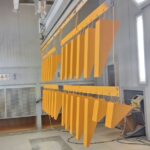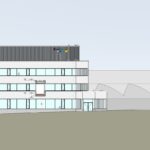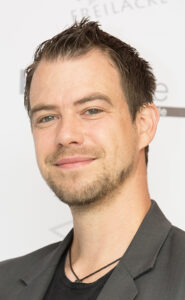Due both to the environment and to introduction from different processes, bacterial growth in EC systems is inevitable. As a result of the use of increasingly environmentally friendly systems and low-emission preservatives in particular, only partial protection of pipelines, rinsing zones and coating basins is possible. This increases the importance and significance of good, diligent hygiene throughout the entire coating process – from pretreatment to the coating process itself to waste water treatment and system maintenance.
Incrustations, adhesions and other residue on the walls of rinsing zones or in the EC basin, for example, make ideal habitats for a host of microbes. The microbes multiply in these habitats and work together to form their own habitat: biofilm. Within this biofilm, microbes can grow unchecked and even protect themselves from external influences. This is one of the most common sources of infection, as biofilms which are not removed cannot be successfully combated with chemicals like biocides alone, leading to even more growth.
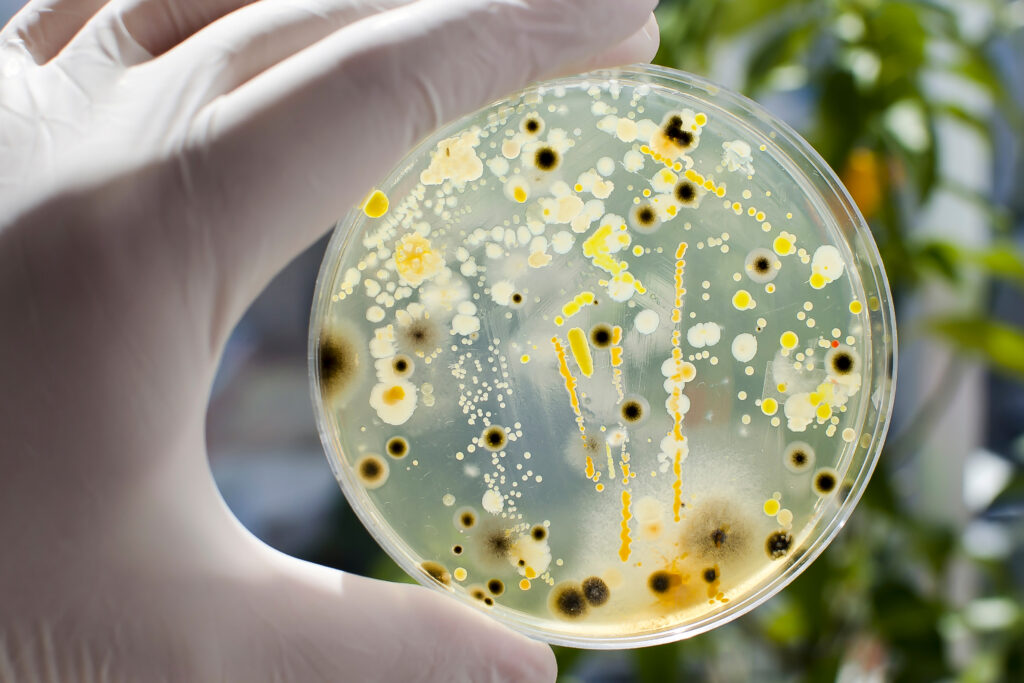
Basic production hygiene is necessary to ensure that all this doesn’t interrupt your coating processes or even lead to production downtime. The following have been proven effective here:
- Basic cleaning
- Interim cleaning
- Continual measures
1. Basic cleaning
We at FreiLacke recommend cleaning systems in their entirety at least once a year. Here, the EC basin is pumped into the counter container and the basin is cleaned of sludge, residue and other soiling. The rinsing zones are also drained and intensively cleaned of any incrustations and residue using a suitable method, such as high-pressure cleaning. The collecting containers under the rinsing tunnels also need to be taken into account here, as deposits (i.e. incubators for bacteria) can form here due to fluctuating fill levels in particular. Pipelines like the cascades of the ultrafiltrate rinsing zones should also be checked and, if necessary, cleaned when a system is cleaned.
Subsequent preservation using suitable biocides is also enormously important, as this is the only way to achieve optimal effectiveness through a combination of mechanical and chemical treatment. The corresponding specifications regarding the quantities to be used and treatment time absolutely must be followed here.
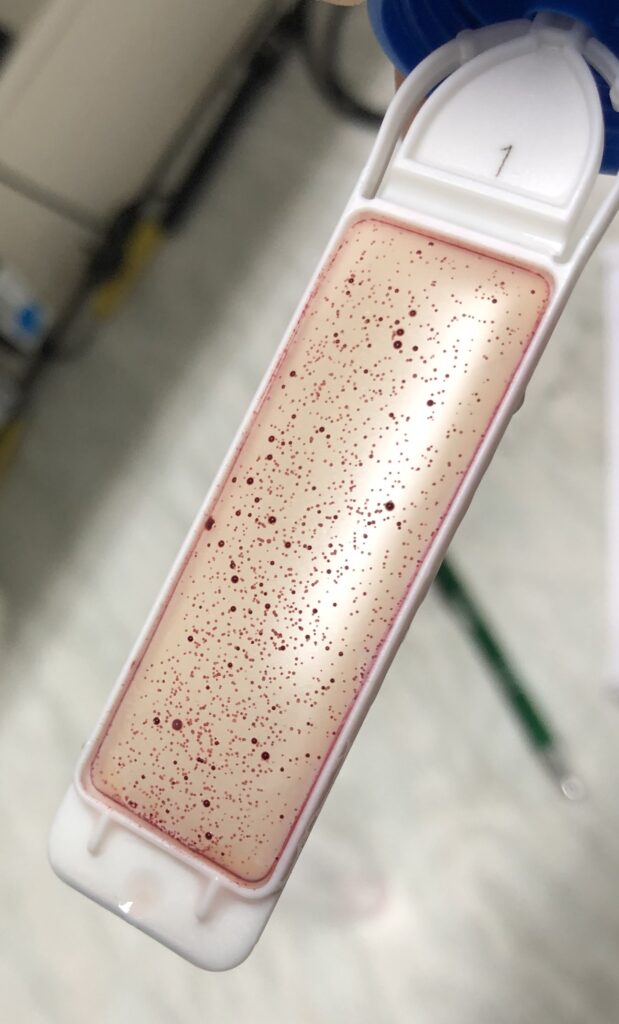
2. Interim cleaning
Over the course of the year, and independent of basic cleaning, we recommend already taking preventive measures for system hygiene at an early stage.
That’s why we recommend draining the ultrafiltrate rinsing zones and cleaning them at regular intervals. When doing so, intensively clean the rinsing tunnel and the collecting trays of the rinsing zones – first mechanically, then chemically. The interval is based on the level of production utilisation, the age of the system and the general level of soiling. For many customers, a one- to three-month rhythm has proven effective.
Despite taking all these measures, bacterial contamination can and will occur over the course of the year. When this happens, biocide treatment must be carried out at an early stage to prevent excessive growth, the formation of biofilm and difficulties in coating.
3. Continual measures
Continual measures include both daily and weekly measures. The first of these measures is daily determination of the bath values. Indications of possible bacterial contamination may already be exhibited and identifiable here. Increasing conductivity in the coating bath in particular, especially in the ultrafiltrate, is an indicator and distinguishing feature of rising microbial contamination.
The weekly routine also includes monitoring the bacterial situation using suitable immersion and dish-type nutrient media. Thanks to their ease of use and broad range of bacterial detection, dip slides have proven to be very effective and can be used by anyone after brief instruction. At a minimum, sampling should be carried out in the coating bath, the ultrafiltrate and the final rinse before the EC and can be expanded to include other areas as needed.
New modern and more environmentally friendly coating systems contain considerably less solvent, making them more susceptible to potential bacterial growth. Experience from the past few years has shown that the ultrafiltrate rinsing zones and demineralised rinsing zones upstream of the EC were frequently the origin or starting point of many cases of bacterial contamination. Weekly preservation of the ultrafiltrate rinsing zones can lead to a considerably longer EC basin service life and prevent rapid contamination here.
As mentioned above, general cleanliness and order round the system are indispensable in the battle against continual microbial contamination. This starts directly in the system with the avoidance/regular removal of residue and continues in the rinsing zones, in which stagnant water and incrustations etc. should also be avoided/removed on a regular basis.
Areas round the system such as the filters, ultrafiltrate containers and coating replenishment equipment also contribute to good overall results, however. Soiling, for example, should be removed immediately and old filters disposed of so bacteria can’t incubate there.
In sum, the following continual measures contribute to the prevention/early detection of bacterial growth and make it possible to respond accordingly:
- Daily determination of the bath values
- Monitoring via sampling with dip slides
- Regular preservation of ultrafiltrate rinsing zones
- Demineralised water monitoring/preservation
- Cleanliness round the systems
- Final rinse pretreatment, monitoring and prevention of spreading
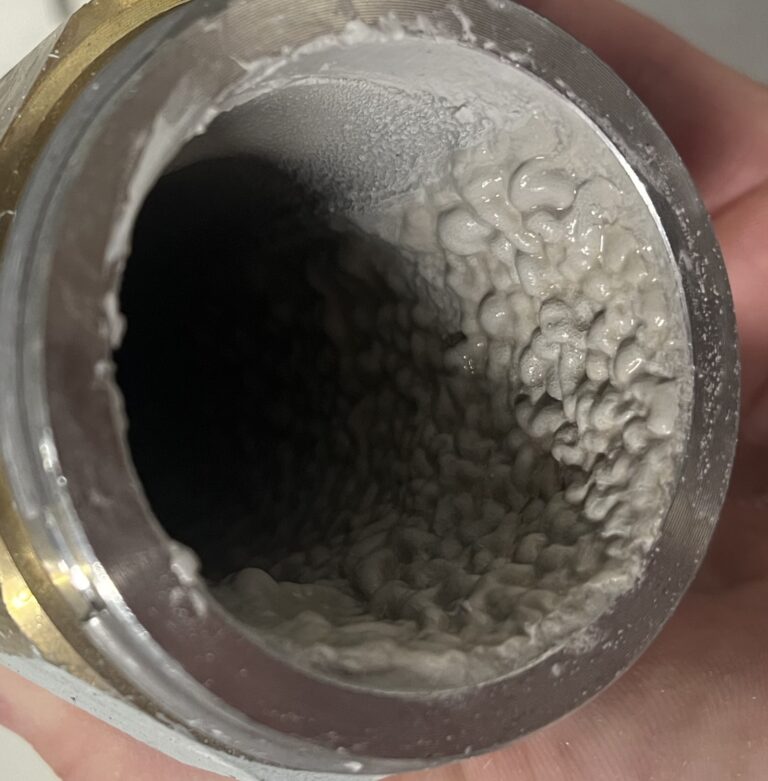
Biocide kit
As mentioned above, microbial contamination can never be fully prevented, even with outstanding system hygiene. The frequency and – most importantly – consequences can be massively influenced by system hygiene and maintenance, however.
Should preservation still be necessary, we have effective and efficient remedies available to us in the form of the biocide kit. All biocides have been correspondingly tested and approved for use with EC equipment at the FreiLacke laboratory. Through a potential combination of different agents, a broad range of different bacteria, yeasts and other fungi can be combated and possible adaptation prevented.
It’s crucial to note that the treatment time (at least 48 hours) must be complied with. This applies to all biocides. During this time, production must not be carried out, as the application of voltage and the coating process will render the biocides ineffective and unusable.
Essentially, a quantity of 0.2 percent based on the basin volume has proven effective. In special cases, larger or smaller amounts may also make sense. This should always be coordinated with FreiLacke AE.
The hygiene audit: A system’s health check-up
You can’t target and solve problems unless you understand where the causes lie and are able to identify them. We at FreiLacke stand by our customers with comprehensive service here as well. This is why we’re happy to support our customers with system cleaning, concepts for preventive maintenance and cause analysis by way of a hygiene audit.
This hygiene audit is like a “health check-up for your system”,
where the entire process is put to the test with regard to microbiological contamination.
A hygiene audit entails a systematic examination of the various zones – from pretreatment to the final rinse after EC coating.
During an audit, the process liquids are sampled and swabs of walls, undercuts, cover plates and deposits are taken. All these samples are then spread onto nutrient media and examined for aerobic/anaerobic bacteria, yeasts and other fungi.
This “health check-up for your system” gives you a clear overview and deeper understanding of the potential trouble spots and starting points for recurring germ infestations. A systematically conducted hygiene audit also makes it possible to identify areas of action and take targeted measures to prevent continual germ infestation and to ensure a stable and high-quality coating process.


